Do you have a question about the Eaton E Series and is the answer not in the manual?
Details safety messages and proper usage guidelines for the E-Series Quick Start Guide.
Defines DANGER, WARNING, CAUTION, and NOTICE message types for user safety.
Emphasizes following instructions for safe installation, operation, and servicing of the equipment.
Provides crucial details regarding device combination, terminal assignment, and ESD awareness.
Explains how to install the PowerPort-E setting and operation software from the product DVD.
Overview of setting up the PC connection to receive data from the protective device.
Lists required cables (USB, Null Modem, USB/Serial adaptor) for device connection.
Step-by-step guide for connecting the device to a PC using a USB cable.
Explains how to connect the device via Ethernet, including TCP/IP parameter setup.
Details serial RS232 connection setup for devices up to Release 2.4.
How to retrieve data (settings) from the protective device using PowerPort-E.
How to change setting values by activating modules in Device Planning.
Explains the advantages of using PowerPort-E for configuration over the device panel.
Details the two main steps for establishing a PC connection via USB or Ethernet.
Introduces the top-level menu entries and navigation using softkeys.
Demonstrates navigating the menu tree using softkeys on the device panel.
Explains the meaning and function of various softkey symbols used in the interface.
Details the process of entering passwords for access levels, including default password.
Lists and briefly describes the fixed-label function keys (Info, Ack/Rst, Ok, CTRL).
How to use the Info key to view LED assignments and signal status.
Step 1 for modifying parameter values using the Ok key, including temporary storage.
How to reset latched signals, outputs, and trip commands via the Ack/Rst key.
How to use the CTRL key to access switchgear control functions and view single-line diagrams.
Example of controlling Lockout Relays for the EBR-3000 device.
Explains various tokens used in the interface for clarity.
Explains the asterisk (*) token indicating temporary or unactivated parameter changes.
Explains the question mark (?) token indicating validity or consistency problems.
Explains the circled dash (O) token indicating unused or irrelevant parameters.
Explains the information (i) token providing detailed parameter descriptions.
How to display, edit, and transfer single-line diagrams using ErPage files.
How to navigate back to the main menu from any panel screen.
Explains how parameter changes trigger checks and mark issues with '?'.
How to use the Status Display for checking signal statuses and device behavior.
How to reset latched signals, counters, and specific commands like Lockout of Breaker Failure.
Procedure to reset device passwords to the default "1234" via a cold restart.
Steps for commissioning, including safety, wiring, settings, and tests.
Configuring surrounding settings like phase sequence, frequency, and VT parameters.
Details on setting thresholds, timer values, and directional modes for overcurrent protection.
How to configure voltage protection instances for over/under voltage and related parameters.
Requirements for measuring residual voltage via auxiliary windings in a broken delta connection.
How direction determination works and its convention for fault direction.
Modifying single parameters dynamically within protection modules.
Assigning digital input status to module input parameters.
Configuring binary outputs, latching behavior, and reset requirements.
Explains the use of Load and Generator Reference Systems for phase angles.
How protection functions issue pickup, trip, and trip command signals.
Principles for creating new configuration files, offline or connected to a device.
How to convert settings to match the connected device's typecode to resolve mismatches.
How to convert settings for firmware version differences, only allowing upgrades.
How to activate/deactivate modules and protection functions required for the application.
Setting the scaling for displaying measured values (per unit, primary, secondary).
Configuring nominal voltage, inversion, and debouncing for digital inputs.
Setting parameters for relay outputs, assigning signals, and inverting logic.
Configuring LED parameters like latching, color, and assigning signals to LEDs.
Configuring surrounding settings like phase sequence, frequency, and VT parameters.
Setting parameters to block protection modules or trip commands based on binary signals.
Explains Global and Setting Group Parameters, parameter sets, and Adaptive Parameter Sets.
Settings for Synchrocheck module, including mode, close request, and voltage thresholds.
Assigning protection trip commands to switchgear trip commands and relay outputs.
Configuring switchgear device positions and assigning digital inputs to position indicators.
Details safety messages and proper usage guidelines for the E-Series Quick Start Guide.
Defines DANGER, WARNING, CAUTION, and NOTICE message types for user safety.
Emphasizes following instructions for safe installation, operation, and servicing of the equipment.
Provides crucial details regarding device combination, terminal assignment, and ESD awareness.
Explains how to install the PowerPort-E setting and operation software from the product DVD.
Overview of setting up the PC connection to receive data from the protective device.
Lists required cables (USB, Null Modem, USB/Serial adaptor) for device connection.
Step-by-step guide for connecting the device to a PC using a USB cable.
Explains how to connect the device via Ethernet, including TCP/IP parameter setup.
Details serial RS232 connection setup for devices up to Release 2.4.
How to retrieve data (settings) from the protective device using PowerPort-E.
How to change setting values by activating modules in Device Planning.
Explains the advantages of using PowerPort-E for configuration over the device panel.
Details the two main steps for establishing a PC connection via USB or Ethernet.
Introduces the top-level menu entries and navigation using softkeys.
Demonstrates navigating the menu tree using softkeys on the device panel.
Explains the meaning and function of various softkey symbols used in the interface.
Details the process of entering passwords for access levels, including default password.
Lists and briefly describes the fixed-label function keys (Info, Ack/Rst, Ok, CTRL).
How to use the Info key to view LED assignments and signal status.
Step 1 for modifying parameter values using the Ok key, including temporary storage.
How to reset latched signals, outputs, and trip commands via the Ack/Rst key.
How to use the CTRL key to access switchgear control functions and view single-line diagrams.
Example of controlling Lockout Relays for the EBR-3000 device.
Explains various tokens used in the interface for clarity.
Explains the asterisk (*) token indicating temporary or unactivated parameter changes.
Explains the question mark (?) token indicating validity or consistency problems.
Explains the circled dash (O) token indicating unused or irrelevant parameters.
Explains the information (i) token providing detailed parameter descriptions.
How to display, edit, and transfer single-line diagrams using ErPage files.
How to navigate back to the main menu from any panel screen.
Explains how parameter changes trigger checks and mark issues with '?'.
How to use the Status Display for checking signal statuses and device behavior.
How to reset latched signals, counters, and specific commands like Lockout of Breaker Failure.
Procedure to reset device passwords to the default "1234" via a cold restart.
Steps for commissioning, including safety, wiring, settings, and tests.
Configuring surrounding settings like phase sequence, frequency, and VT parameters.
Details on setting thresholds, timer values, and directional modes for overcurrent protection.
How to configure voltage protection instances for over/under voltage and related parameters.
Requirements for measuring residual voltage via auxiliary windings in a broken delta connection.
How direction determination works and its convention for fault direction.
Modifying single parameters dynamically within protection modules.
Assigning digital input status to module input parameters.
Configuring binary outputs, latching behavior, and reset requirements.
Explains the use of Load and Generator Reference Systems for phase angles.
How protection functions issue pickup, trip, and trip command signals.
Principles for creating new configuration files, offline or connected to a device.
How to convert settings to match the connected device's typecode to resolve mismatches.
How to convert settings for firmware version differences, only allowing upgrades.
How to activate/deactivate modules and protection functions required for the application.
Setting the scaling for displaying measured values (per unit, primary, secondary).
Configuring nominal voltage, inversion, and debouncing for digital inputs.
Setting parameters for relay outputs, assigning signals, and inverting logic.
Configuring LED parameters like latching, color, and assigning signals to LEDs.
Configuring surrounding settings like phase sequence, frequency, and VT parameters.
Setting parameters to block protection modules or trip commands based on binary signals.
Explains Global and Setting Group Parameters, parameter sets, and Adaptive Parameter Sets.
Settings for Synchrocheck module, including mode, close request, and voltage thresholds.
Assigning protection trip commands to switchgear trip commands and relay outputs.
Configuring switchgear device positions and assigning digital inputs to position indicators.
| Series | E Series |
|---|---|
| Operate Time | 15 ms |
| Contact Arrangement | DPDT |
| Electrical Life | 100, 000 operations |
| Vibration Resistance | 10-55 Hz, 1.5 mm |
| Mechanical Life | 10, 000, 000 operations |
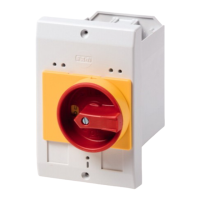
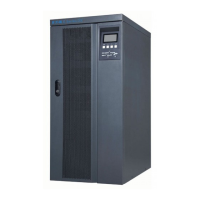
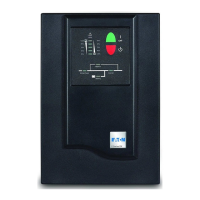
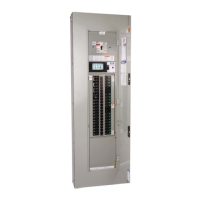
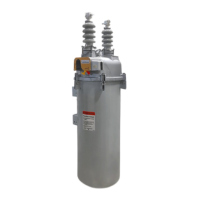



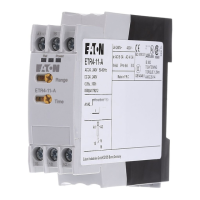
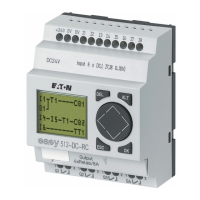
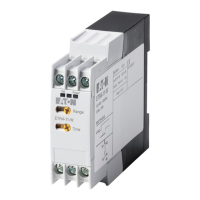
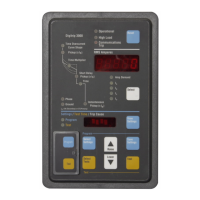
